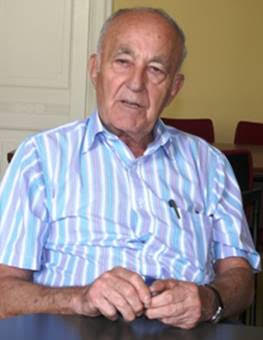
THE VOICE OF INTERNATIONAL LITHUANIA
|
VilNews has its own Google archive! Type a word in the above search box to find any article.
You can also follow us on Facebook. We have two different pages. Click to open and join.
|
Archive for September, 2012
- Posted by - (2) Comment
Vilnius University during
“Soviet Times”
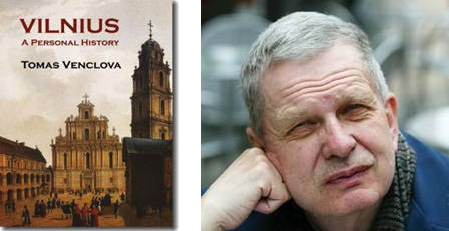
Excerpt from Tomas Venclova’s book “Vilnius a Personal History”.
I entered the University shortly after Stalin’s death. I was sixteen years old, one of the youngest students there. Times had somewhat improved―become more “vegetarian,” to quote Anna Akhmatova. The war against the anti-Communist Lithuanian and Polish partisans was coming to an end, most of them having been killed. The deportations had stopped, and people―though not all, by far―were coming back from Siberia and the prisons. Yet grim Soviet conditions still prevailed.
Polish professors from the prewar era had been ousted―“repatriated” was the official term―and there were scarcely any Lithuanian professors left. Some ended up in America, others in concentration camps or six feet under, and still others were simply not permitted to teach. In the best of cases, they were replaced by high school teachers (most of them very intimidated); in somewhat worse cases, by young careerists; and in the worst of all cases, by individuals who had sent dozens of people into slave labor. Among this third group were many recent arrivals from Russia, who were more successful than the locals in adapting to the system since they knew it better. Lithuanian continued to be the language of instruction. The local Communists thought this was to their great credit, but those in power probably weren’t especially interested in which language was used―what was more important to them was what was said. Marxism (oh, if only it had really been Marxism!) and military training took up almost all the students’ time. At least half of the university library could not be accessed without special permission, something that was practically impossible to get.
Only the University buildings resisted the new times. They were dilapidated and full of garbage. The sewer system didn’t work, and paint and plaster were crumbling off the walls―but the huge labyrinth of inner courtyards, perhaps the most important feature of the Old City, remained. You could wander through this labyrinth for hours. Students joked that there were places where no man had ever set foot. And indeed there were some courtyards we could only see through the auditorium windows; it was a total puzzle how one could gain access to them. All the courtyards had been renamed, since the pre-war names recalled professors of the Jesuit era who, to say the least, seemed suspect to the Soviet authorities. (The Lithuanian nationalists didn’t like the Jesuits much either: although they may not have been Poles, they were cosmopolites.) But sooner or later, the old names turned up again, almost of their own accord. The most archaic courtyard and the one I knew best had a dry fountain with the trunk of a birch tree hanging over it. The southern wing of the courtyard, which had hardly changed since the days of the founding of the University, was supported by massive Gothic pillars. Other, more slender columns decorated an adjoining building; they lent the courtyard color, even cheerfulness, for the upper part was entirely clad in red brick. It was called the Courtyard of Philology, but we all knew that its real patron saint was Sarbievius, the seventeenth-century poet.
Poczobutt Courtyard, on the other hand, dated from a later era. It had an aura of mystery, its arcades usually fading into the dusky light. But the filigree pattern of shadows cast by bare tree branches fell on rough, sun-bathed, cylindrical little towers decorated with bas-reliefs of the signs of the zodiac. On the wall between the towers it was possible to make out Latin inscriptions. I memorized one of them, the hexameter verse, Addidit antiquo nova lumina coelo. Telescopes from the eighteenth century were preserved in the towers’ round rooms. This is where the Jesuit Martin Poczobutt built his observatory, and through these telescopes he observed Mercury, the comets, and the first asteroids. Once, according to his contemporaries, when he was trying to establish the precise orbit of the newly-discovered planet Uranus, he was so exhausted after several sleepless nights that he suffered a hemorrhage and thought he would die. He created a new constellation on the cosmological charts called “Poniatowski’s Bull” (Taurus Poniatovii) in honor of the last Polish-Lithuanian King. Poczobutt proudly carved it into the bas-relief among the other signs of the zodiac. From this courtyard, it is possible to go through a low archway and arrive at the largest and most beautiful courtyard, named in honor of Piotr Skarga, the University’s first rector. In contrast to Poczobutt Courtyard, which calls to mind a semi-dark, idyllic room, the Skarga Courtyard opens up like a wide Italian plaza surrounded on three sides by ochre elliptical arches, and bordered on the fourth by a remarkable façade shaped like an organ, with a massive, square bell tower rising to the right. It looks very southern, even when I’ve seen it during a blizzard. Some compare the plaza to San Marco in Venice.
The façade next to the bell tower is perhaps the consummate work of the architect Johann Christoph Glaubitz. Glaubitz blended it with the very large, old Gothic Church of St. John’s, built by Jogaila. The first school in Vilnius―and in all of Lithuania―was affiliated with it. The University was also established on this spot, which is so rich in tradition. Glaubitz’s façade is late Baroque and truly monumental, yet it seems to vanish into the air. Its colonade consists exclusively of arches and curves; groups of columns tied together by niches, volutes, curved cornices, and metal ornamentation spread out like a web. Silhouetted against the sky with curving, non-Euclidian arcs, the multi-story building becomes smaller toward the top, and its reliefs lighter. Neither solidity nor substantiality remains: architecture renounces itself here and enters the spheres of music and poetry. The kaleidoscopic composition of the ten altars inside the church is in the same style. Originally, there were twenty-two altars, but the most were destroyed in the first half of the nineteenth century; the sculptures and statues were reduced to rubble and carried off in three thousand wagons.
A second misfortune overtook the church after the Second World War. As a student, I couldn’t imagine―even in my wildest dreams―that I would be permitted to enter into the same space where theological issues had once been debated, and where later Mickiewicz and Daukantas attended Mass. With its windows smashed, its interior deserted, the church had been turned into a storeroom for paper―not for vodka, as was the case with St. Casimir’s. Later, the paper probably disappeared too. There was a rumor that some Soviet film outfit was using the church to make a war film, and several dozen live artillery shells were fired off inside the church. It wasn’t until the University’s anniversary that money was found for renovations. The church has only recently once again served as a place of worship.
It was these buildings that kept us from forgetting the very idea of civilization. I am describing only what first strikes one in the Latin quarter of Vilnius. There were countless other mysterious, remote corners: little interior courtyards with upper storeys and pilasters; statues atop old stairways; illegible inscriptions on cracked bas relief, where above windows one could make out medieval symbols. There were chambers preserved from the time of the Jesuits; on one ceiling there was a peaceful Madonna next to portraits of Democritus and Epicurus; Copernicus’s book De revolutionibus orbium coelestium was resplendently displayed in a vitrine―a copy that had allegedly been presented to the author on his deathbed. The ceiling arches of the auditoriums, the clumsy wooden benches on which generations of students left their marks with pens or pocket knives, were much more human than the lectures about the history of the Communist Party or seminars dealing with the history of Soviet literature.
- Bookmark :
- Digg
- del.icio.us
- Stumbleupon
- Redit it
- Posted by - (0) Comment
News from Baltic
educational institutions

Baltic Management Development Association (BMDA) offers all Baltic Institutions to present news in their monthly newsletter. The newsletter includes information about international BMDA network news and events that is placed in interactive BMDA IT portal www.bmda.net
If you would like to have news about you and your institution in BMDA Newsletter, all you have to do, is place the news in BMDA IT portal.
- Bookmark :
- Digg
- del.icio.us
- Stumbleupon
- Redit it
- Posted by - (0) Comment

See our new, old articles at
Section 4 – FROM OUR ARCHIVES
Never say never, said R. Paksas in 2005. He was seemingly right…
VilNews will over the coming weeks present some of our older articles, from 2004 and later, in our Section 4. In our last issue we presented a handful of politicians, including a few current. Among them was ex-President Rolandas Paksas who in 2005 was impeached for alleged ties to Russian businessmen, and had to leave Lithuania's highest office.
We've received two comments:
Julie Minkunas Banionis Who would trust a guy who gives Lithuania's national security info to Russia? Why on earth is he allowed to run for office? I think it's a waste of intelligence (no pun intended) to even spend a facebook posting on your site about this traitor. yucko! :-(
Vyto Be In retrospect: if you impeach, do it properly or don't do it. Now the question always remains if he would have been better than those that came after him...
- Bookmark :
- Digg
- del.icio.us
- Stumbleupon
- Redit it
- Posted by - (0) Comment
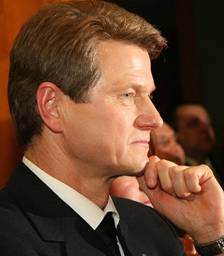
Constitutional Court bans former impeached president Rolandas Paksas from running for parliament
- Bookmark :
- Digg
- del.icio.us
- Stumbleupon
- Redit it
![]()
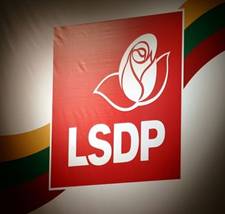
Support for the Social Democratic Party surged to 17.9 % from the previous 14.2%
Support for Lithuania’s opposition parties has surged ahead of a parliamentary election in October, an opinion poll by Spinter Tyrimai for online news service Delfi indicated.
Support for the Social Democratic Party surged to 17.9 percent from the previous 14.2 percent, in a survey conducted between July 20 and July 29, Delfi said. The Labor Party was favored by 16.9 percent, up from 13.3 percent. Order & Justice ranked third with 9.4 percent and Prime Minister Andrius Kubilius’s Homeland Union was on 7.7 percent.
The Liberal Movement, a partner in the current ruling coalition, is the fifth political party that would pass the 5 percent threshold in the election, with 5.2 percent support, according to the survey.
The poll of 1,007 eligible voters had a margin of error of 3.1 percentage points. The election takes place on Oct. 14.
- Bookmark :
- Digg
- del.icio.us
- Stumbleupon
- Redit it
- Posted by - (0) Comment
| EDITORIAL FROM NOVEMBER 2004 |

- Bookmark :
- Digg
- del.icio.us
- Stumbleupon
- Redit it
- Posted by - (0) Comment

- Bookmark :
- Digg
- del.icio.us
- Stumbleupon
- Redit it
- Posted by - (0) Comment
 |
VilNews section 4: |
FROM OUR ARCHIVES
Welcome to some of our highlights from the last 10 years!
Articles, interviews, comment articles and more…

- Bookmark :
- Digg
- del.icio.us
- Stumbleupon
- Redit it
- Posted by - (0) Comment
Irene Veisaite is this
year’s recipient of the
Goethe Medal
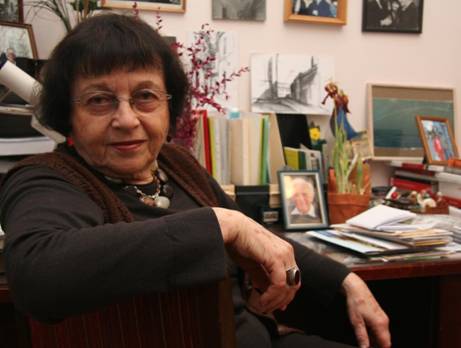
Chairwoman of out VilNews Honorary Council, literature professor and critic Irena Veisaite is a recipient of this year's Goethe Medal.
Once a year, the Goethe-Institut awards the Goethe Medal, an official decoration of the Federal Republic of Germany. This medal honours foreign personalities who have performed outstanding service for the German language and international cultural relations. The Goethe Medal was established by the executive committee of the Goethe-Institut in 1954 and acknowledged as an official decoration by the Federal Republic of Germany in 1975.
Since it was first awarded in 1955, a total of 326 personalities from 58 countries have been honoured.
Read more about the award and Professor Irene Veisaite:
Deutsche Welle Jüdische Allgemeine Goethe Institut
VilNews (Ellen Cassedy) VilNews (Aage Myhre)
- Bookmark :
- Digg
- del.icio.us
- Stumbleupon
- Redit it
- Posted by - (0) Comment
“The mass graves of Tuskulėnai”
A series of articles in 6 parts
TODAY PART 4 OF 6:
THE EXECUTIONERS
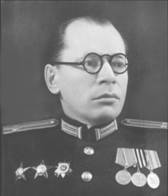
By Vincas Karnila, Associate editor
vin.karnila@VilNews.com
A special group consisting of the head of Division A of the NKGB–MGB, the head of the prison, deputy head of the prison, wardens, and a representative of the Military Prosecutor’s Office carried out the executions by shooting.
Dear VilNews readers, here are the men responsible for carrying out the executions
To read more, go to our SECTION 10
- Bookmark :
- Digg
- del.icio.us
- Stumbleupon
- Redit it
- Posted by - (2) Comment
|
PART 4 OF 6 |
THE EXECUTIONERS
A special group consisting of the head of Division A of the NKGB–MGB, the head of the prison, deputy head of the prison, wardens, and a representative of the Military Prosecutor’s Office carried out the executions by shooting.
The convicts were shot in a special cell which in an attempt to mask its real purpose, was marked as the “kitchen” on the floor plan of the building.
According to the Criminal Code of the Russian Soviet Federal Socialist Republic (RSFSR) the only method of execution was by shooting. The majority of the convicts were shot in the back of the head. However, some of them died differently, as signs of stabbing and cuts were identified on some bodies.
Once the execution was carried out the victims were stripped of their clothing, loaded on to a truck, driven to Tuskulėnai and then buried in a mass grave.
Dear VilNews readers, here are the men responsible for carrying out the executions;
Stepan Kharchenko (b. 1904), NKGB–MGB lieutenant-colonel
He organised 535 executions.

Photo property of the Lithuanian Special Archives.
All rights reserved.
An officer of the repressive structures of the USSR from 1927, he worked as the head of the subdivision of the Smersh Division of the counterintelligence (NKVD Board of Stalingrad Region). He became a member of the Communist Party in 1927. In 1940, he was sent to Lithuania. He managed the 1st Division of the NKVD Board of Vilnius City, later – the 2nd Subdivision of the NKGB. He was one of the organisers of the 1941 June exiles from Vilnius city and county. From 1944 to 1946, he was head of Division A of the NKGB–MGB of the Lithuanian SSR and of the special execution team. In June 1946, he was sent to the NKGB–MGB Board of Rostov Region.
Pavel Grishin (b. 1907), NKGB–MGB lieutenant-colonel
Prior to 1947, when the death sentence was abolished in the USSR, he was responsible for 232 executions. When the death sentence was re-instated, between 1950 and 1953 he managed another 182 executions.

Photo property of the Lithuanian Special Archives.
All rights reserved.
An officer of the repressive structures of the USSR from 1930. He was the head of Division A of the NKVD–NKGB of the Kazakhstan SSR. He became a member of the Communist Party in 1939. From 1946 to 1953 he was the head of Division A of the NKGB–MGB of the Lithuanian SSR and of the special execution team. From 1953, he was head of the 4th Subdivision of the 5th Division of MVD of the Lithuanian SSR. In 1951, he had to give an explanation to the deputy minister of the MGB of the Lithuanian SSR regarding participation in the looting of property of those who had been arrested. He prepared reports for top officials of the Communist Party and security in Moscow about the exile of Lithuanian citizens. Two years after retirement, he became mentally ill and died soon after.
Vasiliy Dolgirev (b. 1896), NKGB–MGB lieutenant-colonel
Between 1944 and 1947, he participated in 41 mass executions and personally executed 650 people. He carried out the greatest number of executions in Vilnius NKGB–MGB internal prison.

Photo property of the Lithuanian Special Archives.
All rights reserved.
He joined the Communist Party in 1919. From 1930 an officer of the repressive structures of the USSR. He served as an operational officer of the NKVD Boards of Sverdlovsk and Chelyabinsk Region. In 1939, he was appointed deputy head of the Zlatoust NKVD internal prison, later he became the head of this prison. Notorious among his colleagues as a drunkard, he was consequently arrested several times and reprimanded. In 1940, as a punishment, he was dismissed and appointed head of the Chelyabinsk police detention centre – a place for persons picked up for being drunk in public. From 1942, he was operational officer of the construction battalion of the NKVD Board of Chelyabinsk Region. In 1943, he was appointed as the head of the NKGB Board of Kurgan Region. In July 1944, he was sent to Lithuania and in August appointed the head of the NKGB internal prison of the Lithuanian SSR in Vilnius. In May 1945, he was demoted to deputy head of the prison. In January 1947, he was appointed the head of the subdivision of the Administration and Utilities Department of the MGB of the Lithuanian SSR. From 1950, he was head of the Department in the Fight against Looting of Socialist Property of the MGB of the Lithuanian SSR. In 1952, he retired due to illness and was enlisted in the MGB reserve with the right to wear the MGB uniform. He was awarded various orders and medals for his service, including service in WWII, even though he did not spend a day at the front.
Yegor Kuznetsov (b. 1912), NKGB–MGB captain
In September–October 1944, he participated in his first executions: he shot dead 18 persons in Vilnius NKGB internal prison.
An officer of the repressive structures of the USSR from 1934, he became a member of the Communist Party in 1939. He worked as an NKVD operational officer in Penza Region, Jesin District, later in Serdobsk District. In September 1939, he was appointed an NKVD operational officer of Švenčionys County of Western Belarus. In November 1940 he became head of the NKVD Švenčionys County Division. When the war between Germany and the USSR broke out, between 1941 and 1942, he was the leader of the Soviet partisan platoon in Moscow Region. From 1942 to 1943 he studied in Moscow at the higher school of the USSR NKVD. From 1943 to 1944, he was sent to Chechen-Ingush Autonomous SSR where he organised and carried out the exiles of Chechen and Ingush people. In August 1944, he was sent to Lithuania and appointed the head of the 4th Subdivision of the 4th Division of the NKGB of the Lithuanian SSR and in September – commandant of the Administration, Utilities, and Finance Department of the NKGB. In November, he was appointed the head of the NKGB Alytus County. In 1948, he was sent to the NKGB–MGB Board of Yaroslavl Region.
Boris Prikazchikov (b. 1907), NKGB–MGB captain
Between winter 1946 and spring 1947, he participated in 11 mass executions during which 99 people were killed.
An officer of the repressive structures of the USSR from 1932, he became a member of the Communist Party in 1929. At the end of 1944, he was sent to Lithuania and appointed the head of the 5th Subdivision of the 2nd Division of the NKGB of the Lithuanian SSR. Between May 1945 and November 1946, he was the head of the NKGB internal prison of the Lithuanian SSR; in December 1946, he was appointed the head of the prison subdivision of the NKGB–MGB of the Lithuanian SSR. In November 1947, he became chief operational officer of Division A. In October 1948, he was dismissed from the NKGB–MGB system ‘in absence of any possibility to be used further’. He died in a car accident soon after.
Vasiliy Podoroga (b. 1915), NKGB–MGB first lieutenant
He was a member of the special group which carried out executions. It is thought that it was he who executed the most famous leader of the Lithuanian partisans, Adolfas Ramanauskas-Vanagas, on 29 November 1957, in the KGB internal prison.

Photo property of the Lithuanian Special Archives.
All rights reserved.
An officer of the repressive structures of the USSR from 1937, he became a member of the Communist Party in 1944. In January 1941, he was sent to Lithuania and worked as a prison warden in Vilnius NKVD internal prison. When the war between Germany and the USSR broke out, he worked as a prison warden in Kuibyshev, Syzran, and Rostov NKVD–NKGB internal prisons. In September 1944, he was sent to Lithuania and appointed a prison warden of Vilnius NKGB internal prison and in 1946, appointed deputy head of the warden corps. Between 1950 and 1954 he worked as an assistant to the head of the prison. In 1970, he retired, but worked until 1987 as a duty officer and watchman at the KGB agencies of the Lithuanian SSR. He later left for Ukraine.
EXPLANATION of ABBREVIATIONS
KGB – rus. КГБ, Комитет Государственной Безопасности – Lith. Valstybės saugumo komitetas – Committee for State Security (of the USSR)
MGB – rus. МГБ, Министерство государственной безопасности – Lith. Valstybės saugumo ministerija – Ministry of State Security (of the USSR)
MVD – rus. МВД, Министерство внутренних дел – Lith. Vidaus reikalų ministerija – Ministry of Internal Affairs (of the USSR)
NKGB – rus. НКГБ, Народный Комиссариат Государственной Безопасности – Lith. Valstybės saugumo liaudies komisariatas – People’s Commissariat for State Security (of the USSR)
NKVD – rus. НКВД, Народный комиссариат внутренних дел – Lith. Vidaus reikalų liaudies komisariatas – People’s Commissariat for Internal Affairs (of the USSR)
SMERŠ – rus.СМЕРШ, Главное управление контрразведки СМЕРШ (СМЕРть Шпионам) Народного комиссариата обороны СССР – Lith. SSRS Gynybos liaudies komisariato Kontržvalgybos vyriausioji valdyba SMERŠ (Smert Špionam – Mirtis šnipams) – USSR People’s Commissariat of Defense Chief Counterintelligence Directorate "SMERSH" (SMERt' SHpionam – Death to Spies)
USSR – Union of Soviet Socialist Republics
RSFSR – Russian Soviet Federal Socialist Republic
Kazakhstan SSR – Kazakhstan Soviet Socialist Republic
Lithuanian SSR – Lithuanian Soviet Socialist Republic
This is a translation of a letter dated 2 May 1942 written by future partisan Aldolfas Bagdonas sent to his Mother for Mother’s Day. He would latter be arrested, convicted, executed and then buried in the mass graves of Tuskulėnai.
“In this letter I am sending you, my dear Mommy, my pure love, my childish attachment and my warm wishes for the future through an unfolding bud, through freshly grown grass bowing deeply to you, and through the song of a starling.”
Anthropological studies
According to the Criminal Code of the Russian Soviet Federal Socialist Republic (RSFSR), the only method of execution was by shooting. The majority of the convicts were shot in the back of the head. However, some of the remains of the bodies have signs of stabbing and cuts which attests to cruel behaviour with the remains, even though it cannot be excluded that the lives of some people were taken by methods other than shooting.

Photo property of the State Forensic Medicine Service under the Ministry of Justice of the Republic of Lithuania (SFMS)
All rights reserved
1. A person shot in the back of the head.
A bullet entrance wound in the back of the head.
A bullet exit wound in the forehead.

Photo property of the State Forensic Medicine Service under the Ministry of Justice of the Republic of Lithuania (SFMS)
All rights reserved
2. This person was shot, but instead of a “dead-checking” shot,
the person was hit with a flat object.
A skull vault fracture due to the impact of a flat object.

Photo property of the State Forensic Medicine Service under the Ministry of Justice of the Republic of Lithuania (SFMS)
All rights reserved
3. This person was shot and then hit several times on the right temple of the head with an object
with a flat rectangular surface.
A perforating trauma on the right temple due to several bangs (at least three) on the temple with
an object with a flat rectangular surface (2.5 cm in width).

Photo property of the State Forensic Medicine Service under the Ministry of Justice of the Republic of Lithuania (SFMS)
All rights reserved
4. This person was shot and his head was then pierced with a sharp square object.
Entrance of a sharp square object into the temple of the head.
Exit of the object at the top of the head.

Photo property of the State Forensic Medicine Service under the Ministry of Justice of the Republic of Lithuania (SFMS)
All rights reserved
5. This person was not shot, but most likely killed by piercing the head several times with a four-edged device. In addition, other injuries to the skull from the impact of a rectangular shaped object were identified.
A wound on the parietal bone from a four-edged piercing device.
Signs of two bangs with a rectangular shaped object on the left side of the skull.
In 1990, after the re-establishment of independence in Lithuania, the archives became accessible and witnesses could tell their stories, as a result of which the secret of this location was revealed. At the beginning of 1994, the State Security Department of the Republic of Lithuania identified a mass grave within the grounds of Tuskulėnai Manor of people sentenced to death by Soviet repressive structures. An archaeological investigation was conducted and bodies were exhumed. Forty-five graves with 724 bodies were found.
Forensic medicine experts identified that 666 victims had gunshot wounds;
506 of them were killed with one shot to the head
111 – two shots
31 – three shots
13 – four shots
4 – five shots
1 – six shots.
The skulls of 239 victims had signs of gunshot wounds and other forms of physical violence;
122 of these had marks inflicted by a blunt instrument
112 – had signs of cuts and stabbing
5 – had signs of deep cuts.
In 2004, after the remains of the bodies exhumed were transferred to the chapel-columbarium, the place was officially opened to public on All Soul’s Day, November 2.
Editor’s note;
Dr. Rimantas Jankauskas is a Senior researcher for the State Forensic Medicine Service under the Ministry of Justice of the Republic of Lithuania, a Professor in the Faculty of Medicine, Anatomy, Histology and Anthropology Department, at Vilnius University and Senior researcher and Head of Department of Mykolas Romeris University Forensic Institute in Vilnius.
From the first excavations at Tuskulenai in 1994 and continuing to present day Dr. Jankauskas has been the primary researcher involved with the recovery of the bodies, identification of wounds and working with family members to identify victims. We would like to give Dr. Jankauskas our sincere thanks for allowing us to use the photographs of the head wounds and we would also like to say thank you for all the work you have done over the years in an effort to identify the victims and reunite them with their families.
Over the years Dr. Jankauskas has had many highly competent and dedicated people working with him. To give you an idea of how the work at Tuskulenai has become an international endeavour, we would like to introduce you to one of them. She is Cate (Catherine) E. Bird from the state of Michigan in the United States. I am sure that you join us in offering our thanks to Cate for her fine work at Tuskulenai.
Dear VilNews readers,
I am Cate Bird, a doctoral candidate studying Physical Anthropology at Michigan State University. During summer 2012, I am staying in Vilnius to collect data for my doctoral dissertation. My research evaluates state-sponsored violence in the Soviet Union through the analysis of skeletal trauma and burial organization in the Tuskulenai case. While in Lithuania, I am collaborating with representatives from Vilnius University and the Tuskulenai Memorial, as well as working closely with Justina Kozakaitė, a graduate student from Vilnius University.
Following the Second World War, the Commissariat for Internal Affairs (NKVD) was responsible for identifying internal “enemies of the state” in the Soviet Republics. This state security agency, which would later become the State Security Committee (KGB), targeted anti-Soviet activities in the Lithuanian Soviet Socialist Republic and executed at least seven hundred prisoners from 1944 to 1947. After executions at the NKGB-MGB internal prison in Vilnius (what is now referred to as the KGB museum), prisoners’ bodies were transported to the Tuskulenai Estate where they were concealed until discovery during the 1990s. During archaeological investigations, a total of 724 individuals were found throughout 45 burial pits. Researchers argue that groups of prisoners were likely executed during one night and subsequently buried in one pit together. As of today, twenty-five pits have been associated with execution dates, based on identification of skeletal remains which correspond to specific individuals named in NKVD documents. While fifty-five individuals have been identified, the process is ongoing. Dr. Rimantas Jankauskas, a professor in the Faculty of Medicine at Vilnius University, continues to work closely with family members to identify their relatives.
My dissertation will analyze approximately twelve burial pits and 150 individuals in the Tuskulenai case. Specifically, I am exploring how trauma inflicted before and around the time of death varies. To do this, I will analyze patterns of skeletal and archaeological data by time period (1944-1945 and 1946-1947) as well as by death squad. Over a three year period, three death squads operated at the Lukiškės prison, including primary executioners as well as warders who were responsible for transporting condemned prisoners, taking part in executions, and burying prisoner remains. My project compares executions performed by two of these death squads, specifically those led by Vasilij Dolgirev and Boris Prikazchikov.
The Tuskulenai case does not represent an isolated event in the Soviet Union. Gorbachev’s policy of glasnost allowed similar episodes of violence toward “enemies of the state” to come to light. Three cases in particular are useful as comparisons to the Tuskulenai case, including those from Vinnytsia (Ukraine), Katyn (Russia), and Rainiai (Lithuania). While most of the remains associated with these atrocities were buried soon after discovery, forensic reports detail trauma and burial conditions in each episode. My project will examine how skeletal trauma in the Tuskulenai case compares to these other cases in order to determine how NKVD violence varied during the 1930s and 1940s.
Ultimately, this research can demonstrate how Soviet-sponsored violence fits within broader narratives of state-sponsored violence during the twentieth century. Data is currently being collected with the intent of comparing the Tuskulenai case to other global conflicts, such as those in Guatemala, Argentina, and East Timor. Hopefully, this research will contribute to knowledge of the institutionalization of Soviet violence toward Lithuanians as well as locate the Tuskulenai case within a broader anthropological analysis of state-sponsored violence.

Yours sincerely – Cate Bird
birdcath@msu.edu
Look for the next article
Part 5 of 6
THE CHAPEL – COLUMBARIUM
Dear readers
WE NEED YOUR HELP
Dear VilNews readers, we need your help. As we have said, the victims that were executed in the NKGB–MGB internal prison in between 28 September 1944 and 16 April 1947 were buried in secret mass graves in the territory of the Tuskulėnai Manor. These victims have been found, their bodies recovered, given the dignified burial they never received and their souls have been blessed by a Holy person of the religion the worshipped.
26 May 1947, following the order of the Presidium of the Supreme Council of the USSR, the death penalty was abolished.
On 12 January 1950, the Presidium of the Supreme Council of the USSR passed a decree re-instating the death penalty. Between October 1950 and July 1952, 182 people sentenced to death were executed at Vilnius NKGB–MGB internal prison.
Their place of burial is still not known.
After July 1952 to 1961 executions continued pursuant to the 1926 Criminal Code Article 58 of RSFSR.
The burial place of these victims is still unknown.
The 1926 Criminal Code Article 58 of RSFSR was terminated in 1961 but executions continued.
The burial place of these victims is still unknown
Dear readers we would like to find where these people are buried, recover their bodies, give them the dignified burial they never received and have them blessed by a Holy person of the Religion they worshipped.
This is where we need your help. The NKVD and NKGB–MGB officers that oversaw these executions are now all dead. What ever records and documents which still exist are most likely locked away in a vault somewhere in the Russian Federation and it would seem highly unlikely that anyone in the Russian Federation would be kind enough allow access to these documents and records so that we could find out the location of the burial sites or simply tell us where these people are buried.
We know that there are people out there that know the location of some of these burial sites. Maybe it is a person that processed the documents, maybe it is some one that was just a rank and file soldier that was ordered to drive the truck that transported the bodies or was ordered to dig the trenches for the graves, maybe it is a colleague of one of these people or maybe it is the bartender that heard some of these people talk of it one night. The possibilities are endless.
Maybe none of these people with first hand knowledge of the burial sites are still alive. In that case we are sure that there are people out there with second hand or even third hand information. To have first hand knowledge of these executions would weigh very heavily on any civilized person’s heart and it is very possible that after carrying this weight inside them for many years they finally felt the need to free themselves from this burden they carried inside and told some one.
If you have any information at all, any information of any kind – Please tell us.
It is not important to us how you know, who it was, what they did or who told you.
None of this is important.
The only thing that is important is that we find where the executed people are buried.
This is all we care about.
What we want to do is best explained in the words from Bronius Eiva’s farewell letter he wrote to his wife while waiting his execution while in the prison of Ukmergės Peoples Commissariat for Internal Affairs.
“Please find out when I was shot or hanged and where they bury me.
Dig me up and take me to Šeta cemetary.”
This is all we want to do – Find where they are buried, dig them up and then give them a proper burial but we can only do this with your help.
All information will be kept strictly confidential
We are not concerned with who or what
We are only concerned with where these people are buried
If you have any information of any kind please contact:
The Memorial Complex of Tuskulenai Peace Park
Žirmūnų Gatvė 1F,
LT-09239, Vilnius
Lithuania
Telephone: +370 5 275 1223
E-mail. tuskulenai@genocid.lt
You can also contact me at vkvilnius-tuskulenai@yahoo.com
We sincerely thank you for your help.
Su pagarbe
Vincas Karnila
- Bookmark :
- Digg
- del.icio.us
- Stumbleupon
- Redit it
- Posted by - (1) Comment
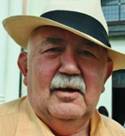 |
FROM NOVEMBER 2004 Professor Donatas Katkus THE MUSIC MAN |


- Bookmark :
- Digg
- del.icio.us
- Stumbleupon
- Redit it
- Posted by - (1) Comment
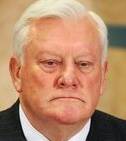 |
FROM MARCH 2005 PM Algirdas Brazauskas MASTER OF THE GAME |






- Bookmark :
- Digg
- del.icio.us
- Stumbleupon
- Redit it
- Posted by - (1) Comment
 |
FROM SEPTEMBER 2005 Rolandas Paksas NEVER SAY NEVER |



- Bookmark :
- Digg
- del.icio.us
- Stumbleupon
- Redit it
- Posted by - (1) Comment
 |
FROM DECEMBER 2005 Arturas Zuokas I AM BEING STABBED IN THE BACK |



- Bookmark :
- Digg
- del.icio.us
- Stumbleupon
- Redit it
- Posted by - (0) Comment
14 October:
Are these men the political leaders that Lithuania needs?

Algirdas Butkevičius
Social Democrats
14,2%

Viktor Uspaskich
Labour Party
13,3%
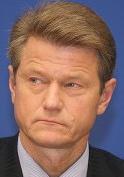
Rolandas Paksas
Order and Justice
11,2%
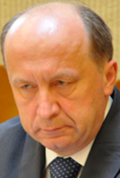
Andrius Kubilius
Homeland Union
8,5%
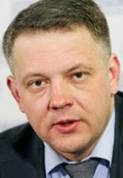
Eligijus Masiulis
Liberal Movement
6,1%

Artūras Zuokas
TAIP (YES)
4,5%
The six political parties / leaders above are likely to gain support as shown according to a poll from June on the website www.delfi.lt
editor@Vilnews.com
Bill Stankunavicius
Dear Aage,What a choice of leaders?Kubilius is certainly not too popular as a leader, Viktor U.would be a great surprise,even in Moscow. Paksas, been there done that...recycle a discredited, untruthful person? Masiulis, questions that seem not to go away...how did his personal & family wealth grow so much and quickly since he entered the Seimas and the Ministry? That leaves Mr.Z and Mr.B. Mr.Z. known by all, and Mr. B. a unknown quantity and quality? Sad line up for such a intelligent, cultured country.Balys
Karl Altau
ugh!
Meecolas Goudialis
If anything they should have been gone a long time ago!!! Somewhere around 1991!!!!!!
Daiva Repeckaite
How boring - all are men.
Riina Ailio
I don't know about others, but Artūras Zuokas is the Future.
Giedrius Gražulis
Andrius Kubilius (Homeland Union) is the most reliable leader. I believe in him.
Riina Ailio
Ahaaa! If so then God save the Kubilius.
Jurate Pupacchiotta Pasekaite
non of them :-( we need new faces, competent people, left-wing people, anti neo-liberalist people.
Giedrius Gražulis
PM Andrius Kubilius (Homeland Union).
Bernard Terway
Where are the women? Lithuanian women are beautiful, smart and should be in the running also.
Rasa Snipiene
Jei iš šitų šešių, tai A. Kubilius...
Lukiškių Aikštė : A Monumental Tribute to Lithuania
Kubilius!
- Bookmark :
- Digg
- del.icio.us
- Stumbleupon
- Redit it
VilNews e-magazine is published in Vilnius, Lithuania. Editor-in-Chief: Mr. Aage Myhre. Inquires to the editors: editor@VilNews.com.
Code of Ethics: See Section 2 – about VilNews. VilNews is not responsible for content on external links/web pages.
HOW TO ADVERTISE IN VILNEWS.
All content is copyrighted © 2011. UAB ‘VilNews’.

 Click on the buttons to open and read each of VilNews' 18 sub-sections
Click on the buttons to open and read each of VilNews' 18 sub-sections 







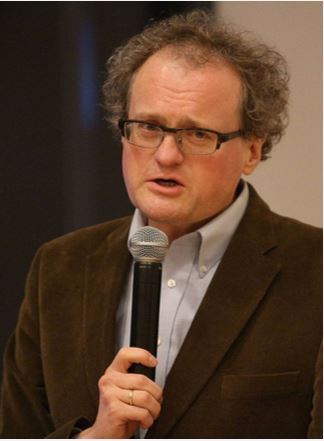
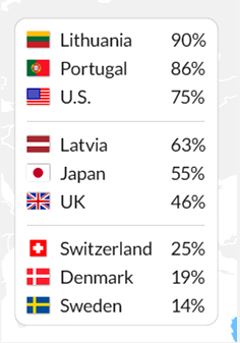
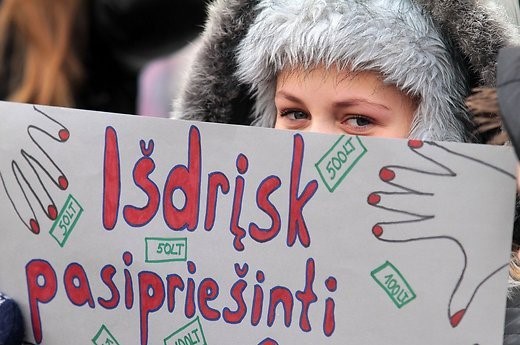



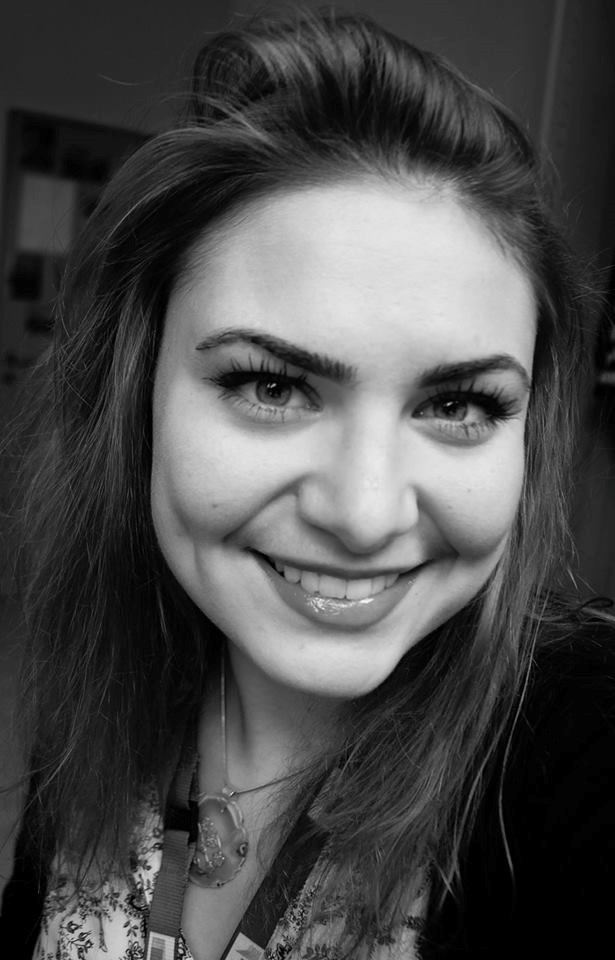
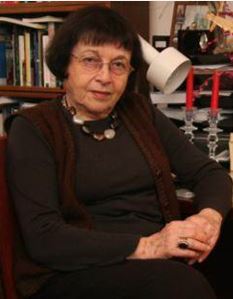
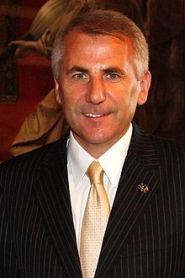
.jpg)
